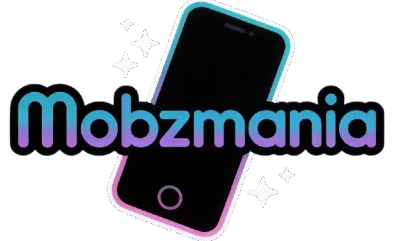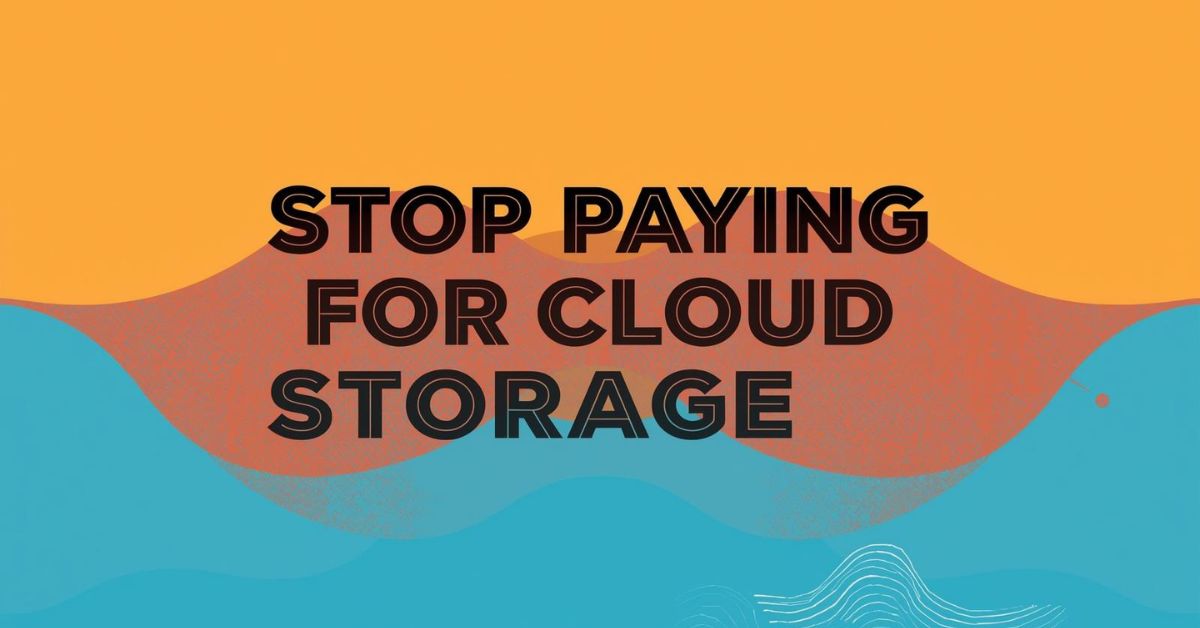Cloud storage has become a normal part of modern life in the USA. Almost every smartphone, laptop, or smart device encourages you to sign up for services like Google Drive, Dropbox, or iCloud. At first, the free space looks generous, but soon you face storage limits, higher subscription costs, and concerns about data security and breaches. Americans spend billions every year on cloud subscriptions, yet most people do not realize there are alternatives to cloud storage that give them full control, better privacy, and no recurring fees. If you are tired of paying for cloud space every month, it is time to explore practical options that put you back in charge.
Jump Links
Before diving deeper, here are the key sections of this article that will guide you through the best alternatives:
- 3 USB Drives
- 2 Personal Cloud Drives
- 1 Network-Attached Storage
- The Best External SSDs of 2024
- How to Back Up and Sync Your Android Phone Directly to an External Hard Drive
- Synology BeeStation Review: Say Goodbye to Dropbox and Google Photos
- AI Is Making YouTube Worse
- 3 Obscure Browsers You’ve Probably Never Heard Of
- Switching to Linux: How to Replace Everyday Apps With Open-Source Alternatives
- The Rise and Fall of Liquid Cooling
3 USB Drives
One of the easiest ways to take control of your files and stop paying for cloud storage is by using USB drives for offline data backup. Modern flash drives now offer storage from 128GB up to 2TB, combining portability, speed, and affordability. Unlike cloud services, these drives provide a privacy-friendly data storage solution because your files never leave your possession. Many models also include hardware encryption, giving extra protection for sensitive information, making them ideal for professionals, students, or anyone who wants secure and reliable storage without monthly fees.
To give you an idea of value, here is a comparison of average US market prices:
| Storage Capacity | Average Price (2024) | Example Brand | Encryption Support |
| 128GB | $20 | SanDisk Ultra | Software-based |
| 512GB | $45 | Kingston DataTraveler | Optional |
| 1TB | $85 | Samsung Bar Plus | Hardware encryption |
| 2TB | $150 | Corsair Flash Voyager | Full protection |
This table shows how easy it is to scale your storage without monthly bills. For quick file transfers or keeping backups of school and work projects, USB drives remain one of the best options available.
2 Personal Cloud Drives
If you enjoy the convenience of cloud access but dislike paying for subscriptions, then personal cloud drives vs online cloud services are worth considering. Devices like Western Digital MyCloud or Seagate Personal Cloud let you set up a private server at home. They act like private cloud storage at home, giving you the same remote accessibility as Dropbox or Google Docs but without giving up personal data ownership and control.
Families often use these drives to share photos, music, and videos across multiple devices. Small businesses rely on them to avoid costly cloud subscriptions while still enjoying multi-device storage options. The only drawback is the initial price and occasional maintenance, but in the long run, these systems save hundreds of dollars while offering better control.
1 Network-Attached Storage
A more advanced solution is to build or buy a NAS (Network-Attached Storage) system. A NAS can hold several drives at once, often using RAID configurations to provide backup redundancy (3 copies rule). With brands like Synology, QNAP, and TerraMaster available in the US, it is easier than ever to set up a system that acts as a home media server setup or even runs apps like Plex for streaming movies.
For example, one freelance videographer in New York compared the cost of storing his projects in Google Drive with building a DIY external hard drive enclosure NAS. Over three years, he saved more than $1,200 while gaining faster speeds and complete control of his files. This shows how build your own NAS projects can be practical for creative professionals.
The Best External SSDs of 2024
When speed is essential, the best external SSDs 2024 offer unmatched performance. Unlike traditional hard drives, SSDs provide instant access with read/write speeds up to 2,000 MB/s. Models like the Samsung T9, SanDisk Extreme, and Crucial X10 Pro are dominating the US market because of their reliability and compact design. For people who need to transfer huge video files, these drives are much faster than cloud uploads.
Here is a quick look at performance comparisons:
| Model | Storage Capacity | Read/Write Speed | Price in USA |
| Samsung T9 | 2TB | 2000 MB/s | $179 |
| SanDisk Extreme | 1TB | 1050 MB/s | $119 |
| Crucial X10 Pro | 4TB | 2100 MB/s | $389 |
For professionals working with large files, these drives are not just an alternative but a must-have. They offer offline data backup methods that are far quicker than uploading to the cloud.
How to Back Up and Sync Your Android Phone Directly to an External Hard Drive
For Android users, it’s no longer necessary to rely on paid cloud subscriptions when there are effective Android phone backup solutions available. Apps like FolderSync let you connect your phone directly to an external hard drive via an OTG adapter, giving you full control over your files. Using these file sync tools for Android, you can automatically back up photos, music, and documents without ever signing up for a subscription service. This approach allows you to stop paying for cloud storage while enjoying unlimited storage capacity, better privacy, and complete control over your personal data, as long as your external drive has enough space.
Synology BeeStation Review: Say Goodbye to Dropbox and Google Photos
One of the most promising devices is the Synology BeeStation. Unlike traditional NAS systems, the BeeStation is built for simplicity. It combines the power of Synology NAS / BeeStation with the ease of plug-and-play setup. The biggest advantage is that it allows you to move away from costly services like Dropbox or Google Photos while keeping the same level of accessibility.
It also offers AI-powered photo management, smart categorization, and remote access. For US households that want a privacy-friendly data storage option without the complexity of building a full NAS, this is an ideal pick. Over three years, BeeStation costs less than half of what you would spend on cloud subscriptions, making it a smarter long-term choice.
Related
AI Is Making YouTube Worse
Lately, YouTube has seen a flood of AI-generated content. Many Americans complain about misleading thumbnails, auto-generated voices, and endless clickbait. As a result, AI is making YouTube worse because the overall quality is dropping, even though creators still chase ad revenue. Users searching for genuine knowledge often get trapped in repetitive, low-quality recommendations.
3 Obscure Browsers You’ve Probably Never Heard Of
Changing your browser can also be a step toward regaining control over your digital life while reducing reliance on paid services. 3 obscure browsers you’ve probably never heard of prioritize privacy, speed, and lightweight performance, offering a secure alternative to mainstream platforms that track your data. For anyone looking to stop paying for cloud storage and explore Linux or open-source web apps, using a lesser-known browser creates a safer ecosystem and complements other privacy-friendly data storage methods.
Switching to Linux: How to Replace Everyday Apps With Open-Source Alternatives
Making the jump to Linux is easier than it has ever been. Everyday apps like Photoshop, Microsoft Office, or even cloud services now have open-source alternatives that cost nothing. Replacing expensive subscriptions with open-source web apps is a natural extension of moving away from paid cloud storage. For many in the USA, this change also fits with a desire for independence and data control.
The Rise and Fall of Liquid Cooling
The rise and fall of liquid cooling in the PC world is a reminder of how technology trends can fade. Once popular in gaming setups, liquid cooling has given way to simpler, safer air-based solutions. The lesson here is simple: not every trendy tool lasts forever. Practical, long-term solutions such as offline data backup methods and personal cloud drives usually provide more value.
May Also Read: How to Access Your Clipboard on Android: The Complete Guide
Conclusion
Cloud services are convenient, but they aren’t the only answer when it comes to protecting your files. With USB drives, high-speed external SSDs, easy-to-use personal cloud drives, and powerful NAS setups, people in the USA now have more reliable and affordable choices. These alternatives not only cut long-term costs but also give you complete personal data ownership and control, while keeping your information safe from potential data security and breaches. If you’re ready to stop paying for cloud storage subscriptions, now is the perfect time to make the switch. Whether it’s a modern Synology BeeStation, a Western Digital MyCloud, or a simple external hard drive, the future of storage lies in smarter, private, and user-controlled solutions.


